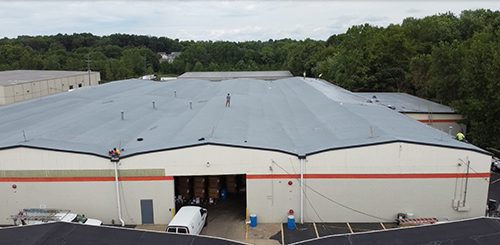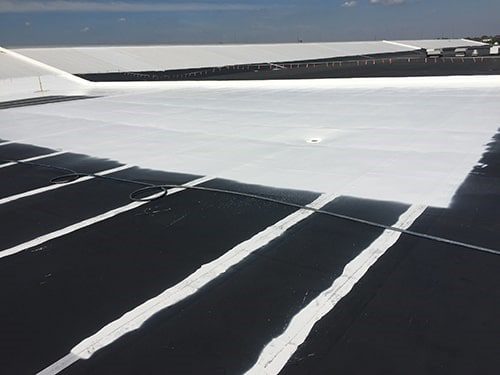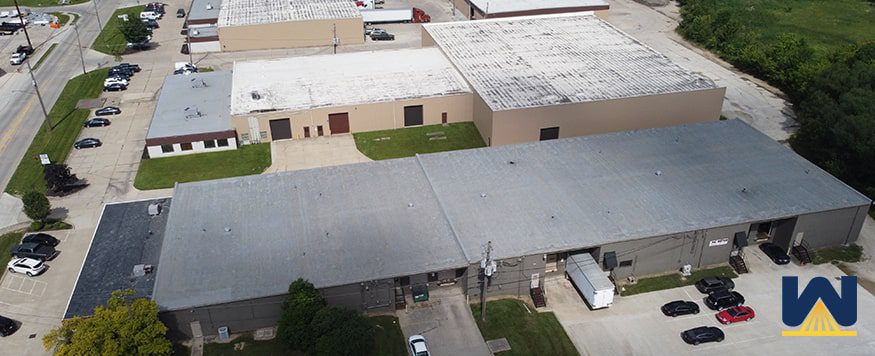Two comments last month have come in about avoiding a complete roof tear-off.
Do any of them sound like you?
“Lately experiencing leaks. I’d like an estimate for a cost-effective solution avoiding a complete tear-off and rebuild if possible.” – June 2, 2021.
“The roof, which is flat, was replaced in 1999, so we are looking for alternatives to extend the life of our roof without the necessity of a tear-off a few years down the road.” – June 24, 2021
If any of the comments above sound like you, then this article will help educate you on how (if possible) to avoid the complete tear-off.
In this article, you’ll learn:
- 3 reasons why building owners try to avoid a complete tear-off (1 of them is the cost)
- Can you avoid a tear-off?
- How to avoid a tear-off with one roofing system installed
- How to avoid a tear-off with two (or more) roofing systems installed
And just so you’re aware, we only write articles based on true events and experiences. Every piece of content written at West Roofing Systems is produced in-house. Every article is reviewed and edited by a roofer/salesman with more than 30+ years of experience in the field.
West Roofing Systems has been in commercial roofing since 1979.
Let’s get started!
3 reasons why building owners try to avoid a complete tear-off
- Cost
- Bad for the environment
- Afraid of throwing away good insulation and/or membrane
Cost
A complete tear-off on a commercial roof will cost at least $6 per square foot. It doesn’t matter what roofing system you’re ripping off and replacing it with, it will cost at least $6 per sq. ft.
You may find that single-ply’s are $3.50 – $7 per sq. ft. or that spray foam is $4 -$6 per sq. ft., but if you need to completely tear-off a roof system, you must consider additional R-value requirements, labor and landfill costs.
Bad for the environment
When a complete tear-off happens, all the roofing materials (in good or bad condition) need to be transported to a landfill. This not only adds to the cost of the project, but it’s bad for the environment.
Afraid of throwing away good insulation and/or membrane
Sometimes a building owner might wonder, “Do I really need a complete tear-off? What if some or most of the roof is in good shape? “How would I know what needs to be torn off and what can stay?”
We’ve seen 90% of a good, dry roof go to the landfill in some cases.
But why?
Some people might be persuaded by an unethical contractor. The building owner might want to start brand new. There are tons of reasons why this can happen.
But that’s not you.
You want a cost-effective solution to get your roof watertight and under a new warranty.
Can you avoid a tear-off?
Per building code, if you already have more than one roofing system installed on your commercial roof, you will need to completely remove at least one roofing system before installing a new one.
- TPO over Modified
- EPDM over Gravel Built-Up
- Spray foam over EPDM
If anything like this has happened to your roof, you’ll need to perform a complete tear-off on at least one roofing system.
Now…if you only have one roofing system installed, you may be able to add another roofing system over what you already have.
This is where a roofing contractor needs to be involved.
A contractor will determine the condition of the roof and determine if it’s cost-effective to repair, restore, or perform a complete tear-off.
What they will be looking for are:
- How much of the roof’s insulation is wet?
- What’s the condition of the seams?
- Are the penetrations watertight?
- How old is the roofing system?
- Is R-value of importance?
- What are the short-term and long-term goals of the building owner?
And much more.
NOTE: If a large percentage of the roof’s insulation is wet (more than 25%) or the seams are in terrible condition (they are losing adhesion to the roof), it might be cost-effective long-term to perform a complete tear-off.
How to avoid a tear-off with one roofing system installed
If you only have one roofing system installed, you can install any roofing system over what you already have.
But…no roofing system should be installed over wet insulation.
Chances are, if you have some leaking, water is getting under the membrane, saturating the insulation, and making its way into your building.
A roofing contractor can remove all the wet insulation, install new and dry insulation, replace the membrane, and tie it into the existing roofing system.
A cost-effective option is to install a spray foam roofing system over your existing roof.

A spray foam system costs around $4-$6 per square foot. Metal roofs cost a lot more. Single-ply roofs cost about the same, but there are several benefits they don’t offer, such as:
- Spray foam is fluid-applied, which makes it less labor-intensive to install. The advantage is increased/decreased depending on the number of penetrations.
- Spray foam has an R-value of 6.5 per inch of thickness. Single-ply use iso boards which range from R-3.5 to R-5.5.
- Single-ply roofs have seams, spray foam roofs do not. Stress is applied to seams when the roof expands and contracts with weather fluctuations. Most roof leaks happen at the seams.
- Tapering, or making changes to the insulation to provide proper slope to avoid standing water is expensive on a single-ply system. With spray foam being fluid-applied, adding more product to customize the slope is very easy.
Read more: An Honest Comparison: Single-Ply vs. Metal vs. Spray Polyurethane Foam vs. Roof Coating Systems
How to avoid a tear-off with two (or more) roofing systems installed
If you already have two roofing systems installed, an option most are unaware of is a roof coating system.
Roof coating systems are engineered to:
- Be waterproof
- Seamless
- To not lose adhesion
- To add UV reflectivity
- To be elastomeric, which means it will expand and contract with the roof and not lose any performance
Roof coating systems are not considered a “roofing system” by building codes.
They are considered roof maintenance.
Here’s a video showing how a roof coating system is installed:
The installation begins by making repairs to the existing roof.
This means they will identify and remove all the wet insulation the roof has. They will also remove any damaged membrane and replace it with new materials.
Then they will prepare the roof to accept the coating. This includes power washing, adhesion tests, primers, and intensive seam treatments.
Here’s a photo of seams being treated on an EPDM roof:

Finally, it’s time to install the coating. The coating is installed in two separate coats – a basecoat and a topcoat.
The combined thickness of the coating determines the warranty length, for example:
- 20 mils of coating = 10-year warranty
- 25 mils of coating = 15-year warranty
- 30 mils of coating = 20-year warranty
What are your next steps?
If you only have one roofing system installed, you can contact any roofing contractor to see if they can install something over what you already have.
If you have two (or more) roofing systems, you’ll be forced to perform a complete tear-off of at least one roofing system.
But if your roof is in decent shape, a roof coating system might be the perfect way to avoid a tear-off and get your roof under a new warranty.
If you’d like to learn more about the roof coating system (which can be installed even if you only have one roofing system installed), please click on the image below.


